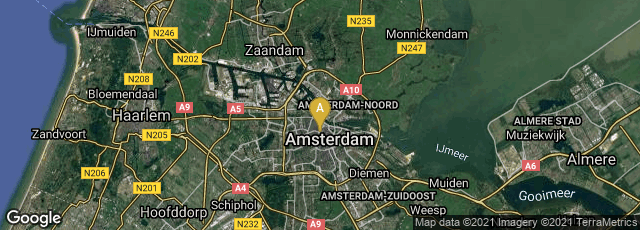

A: Amsterdam-Centrum, Amsterdam, Noord-Holland, Netherlands
In 1685 Dutch physician, anatomist, poet, and playwright Govert Bidloo published Anatomia humani corporis. This large folio contains an engraved title, engraved portrait of Bidloo by Abraham Bloteling after Gérard de Lairesse and 105 engraved plates after Lairesse, probably by Bloteling and Peter and Philip van Gunst. The work was issued in Amsterdam for the widow of Joannes van Someren, the heirs of Joannes van Dyk, Henry Boom and widow of Theodore Boom.
Considered as an artistic meditation on anatomy, Gerard de Lairesse’s designs are a total departure from the idealistic tradition inaugurated in the mid-16th century by the Vesalian woodcuts. They are also worlds apart from the productions of the Odoardo Fialetti - Giulio Casserio collaboration. Lairesse displayed his figures with everyday realism and sensuality, contrasting the raw dissected parts of the body with the full, soft surfaces of undissected flesh surrounding them; placing flayed, bound figures in ordinary nightclothes or bedding; setting objects such as a book, a jar, a crawling fly in the same space as a dissected limb or torso. He thus brought the qualities of Dutch still-life painting into anatomical illustration, and gave a new, darker expression to the significance of dissection. De Lairesse’s images of dissected pregnancies and premature infants also reflect compassion—a quality unusual in art that was intended primarily to be scientific.
A painter and writer on art theory, Lairesse was influenced by Rembrandt, who painted his portrait in 1665, and also by the French styles of Nicolas Poussin and Claude Lorrain. The French called Lairesse the “Dutch Poussin.” Lairesse suffered from congenital syphilis, which gave him a deformed nose visible in Rembrandt’s portrait. Perhaps because he had always lived with disease Lairesse had more than a casual interest in medicine. Syphilis made him blind in 1690, and for the rest of his active life Lairesse supported himself by lecturing and writing about art, publishing two books on drawing and painting which were widely reprinted and translated throughout the eighteenth century.
Some of Lairesse’s drawings were probably engraved by Abraham Bloteling (Blooteling). A line engraver and creator of mezzotint plates who worked in both Holland and England, Bloteling was particularly famous for the quality of his mezzotints, for which he initiated a more thorough system of preparing the grounds, and may have invented the rocker. According to historian of medical book illustration Ludwig Choulant, prior medical scholars Albrecht Haller and Johann Carl Wilhelm Moehsen believed that some plates in the series were engraved by the brothers Pieter and Philip van Gunst. Despite imperfections from the point of view of dissection, which Choulant and others have pointed out, the Bidloo-de Lairesse anatomical studies reflect much that is good, including early depictions of skin and hair from observation with a microscope.
Bidloo began this project with de Lairesse around 1676 during a period in which he was also writing plays in Amsterdam, obtaining his medical degree, and working as a surgeon. It would appear that Bidloo brought his flair for drama to the conception and realization of this project. The 105 large drawings were probably completed about 1682, after which the plates had to be engraved—a huge production.
In 1690 Bidloo's publishers issued an edition in Dutch, and in 1698 William Cowper issued an expanded English with new text using Bidloo's original plates, but without crediting Bidloo, resulting in a famous plagiarism dispute in the era before copyright.
Choulant, History and Bibliography of Anatomic Illustration (1920) 250. Dumaître, La Curieuse Destiné des Planches Anatomiques de Gérard de Lairesse (1982). Hofer, Baroque Book Illustration, 146. Hook & Norman, The Haskell F. Norman Library of Science and Medicine (1991) No. 231. Roberts & Tomlinson, The Fabric of the Body, 309-17. Wax, The Mezzotint: History and Technique (1990) 25-26.
♦ In 2012 it was my pleasure to sell a spectacular large paper copy of Bidloo's atlas, bound in contemporary full red morocco, and emblazened with the coat of arms of its first owner, to Vassar College as their 1,000,000th book. Vassar produced an excellent video, beautifully describing this wonderful copy: